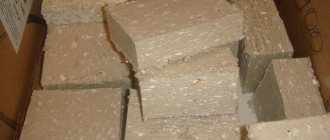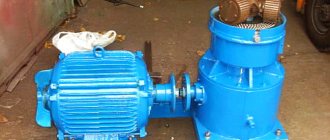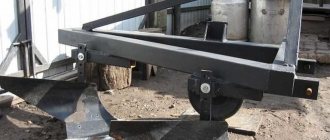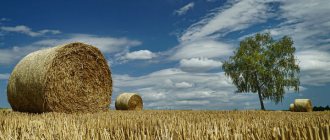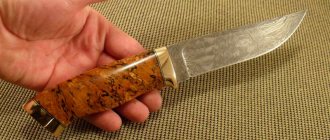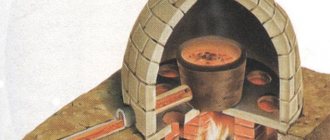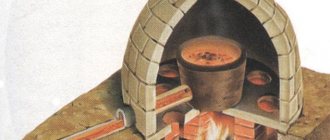The relevance of the question of how to make pellets with your own hands among owners of private houses is explained by the increasing popularity of this type of solid fuel. It is used both to light the fireplace and to operate the heating boiler. Making pellets with your own hands (wood waste can be used for this, as well as waste generated after processing agricultural products) allows you not only to solve the issue of their disposal, but, most importantly, to obtain solid fuel that is easy to use and quite highly efficient.
Pellets - economical and environmentally friendly fuel
The appearance on the domestic market of heating equipment operating on a type of fuel such as pellets, which, among other things, are environmentally friendly, is also the reason that an increasing number of owners of private houses and summer cottages are thinking about how to organize the production of pellets in their homes. conditions. The main thing that should be taken into account when producing fuel briquettes independently is the economic justification for this decision.
What are fuel pellets
Before finding out how pellets are made at home or in a production plant, you should understand what this type of solid fuel is. Pellets for heating are cylindrical granules, pressed from combustible raw materials, the diameter of which can be from 4 to 10 mm, and the length is in the range of 15–50 mm.
The process of squeezing pellets through a cylindrical press matrix
What are pellets made of? Various raw materials of natural origin can be used to produce fuel pellets. Thus, the most common types of raw materials from which fuel pellets are made are:
- industrial waste from wood processing enterprises - sawdust and small shavings (pellets made from sawdust and wood shavings are considered the highest quality type of fuel of this type);
- waste from logging and primary wood processing, which includes, in particular, branches, tree bark, dry leaves and even pine needles;
- waste from enterprises engaged in processing agricultural products (in this case, sunflower husks, as well as wheat, rice or buckwheat husks are used as raw materials for the production of pellets);
- peat (granulation or briquetting makes it possible to make peat extracted in a crumbly state more convenient as a fuel material; moreover, a peat briquette, when compared with peat in the form of a crumbly mass, has a higher heat transfer);
- bird droppings, which are produced in large quantities at poultry farms and are suitable for burning;
- certain types of solid household waste, which, using special processing technologies, are converted into inexpensive and fairly energy-efficient fuel briquettes.
At the beginning of the process, wood materials are crushed into smaller fractions
The qualitative characteristics of fuel briquettes (in particular, the degree of thermal output) largely depend on what the pellets are made from.
Depending on a number of parameters by which the quality of pellets is judged, fuel pellets are usually divided into three main categories.
- There are so-called premium pellets, for the production of which highly purified wood waste is used. Fuel pellets of this category, which are easily recognized by their light color, dense and uniform internal structure, are characterized by high heat transfer and minimal ash content. When they are burned, a very small amount of non-combustible residue remains - only 0.5% of the total mass of fuel. The most significant disadvantage of fuel pellets in this category, which make up the vast majority of pellets produced today, is the fairly high cost.
- Fuel pellets of the industrial or industrial category, which, in addition to sawdust, may contain soil impurities, tree bark, foliage and pine needles in small quantities. Pellets of this category, the color of which is darker than that of premium fuel pellets, have a higher ash content, but at the same time provide decent heat transfer. In addition, pellets in this category are affordable. When using industrial grade fuel pellets, boiler equipment requires more frequent preventative maintenance.
- Pellets of the lowest quality are made mainly from agricultural waste. Fuel pellets of this category are characterized by a fairly high ash content (4% or even higher) and not very good heat transfer. Meanwhile, the low cost of pellets of this category makes their use profitable in boiler houses, with the help of which large areas are heated.
Granular fuel can be shipped in bulk for large boiler houses or supplied in bags of various sizes
Pellets made from sawdust, shavings and other natural raw materials are used not only for lighting heating boilers in residential buildings and industrial buildings: they are used to fertilize and mulch the soil. Such granules are also used as adsorbent elements that absorb moisture well.
Starting and maintaining the boiler
Comparison of heating costs
Launch
The equipment can be started only after installing the pellet boiler and connecting the corresponding heating system pipes to it. Once the mentioned tasks are completed, turn on the cold water supply to the heating system.
Observe the operation of the boiler. If any unusual symptoms occur, turn off the equipment and do not use it until the problem is resolved.
Observe the boiler operation
Care
Homemade pellet boilers, like any other heating units, require appropriate care.
Every 2-3 weeks, empty the ash pan of waste. Clean the smoke exhaust duct every 2-4 weeks. This will not take you much time, but ignoring such simple maintenance will lead to a significant decrease in the efficiency of the boiler and make the equipment potentially unsafe.
If desired, additional automation equipment can be connected to the pellet boiler. This will make the operation of the equipment more convenient - you can simply forget about the need to reload fuel and other related activities for some time.
Modern automation tools even allow you to set up remote control of the heating unit, which is also very convenient.
And these are not the only possible additions. How do you like, for example, self-cleaning systems for boilers? Be sure to study the available modifications and, if desired, purchase such additions for your boiler.
Boiler with pellet hopper
You can assemble a simple pellet boiler with your own hands, following the instructions you received earlier.
Good luck!
Main advantages
The active growth in popularity of pellet fuel, observed recently, is explained by a number of its advantages.
- The high environmental friendliness of fuel pellets lies in the fact that when they burn, predominantly water vapor and carbon dioxide are released into the atmosphere, which are not harmful to plants and living organisms.
- Since pellet fuel is highly pyrolyzable, it can be successfully used in highly efficient long-burning fuel equipment. Also, thanks to this quality, the process of loading pellets into a heating boiler can be easily automated, thereby minimizing human participation in the operation of such equipment.
- Due to the compact size of fuel pellets, there is no need to allocate large areas for their storage. In addition, transporting granules does not cause any particular difficulties and, accordingly, does not require significant financial costs.
- Granulation of fuel pellets is carried out without the use of additional chemicals, adhesives and modifiers, which contributes to the purity of such fuel, which does not have an unpleasant odor and does not cause allergic reactions. These characteristics allow you to organize the process of storing pellets even in close proximity to residential premises.
- The thermal output of high-quality pellets exceeds that of many types of natural wood and coal.
- When properly stored, pellets are not subject to processes of internal combustion and decay, which minimizes the likelihood of their spontaneous combustion.
- In many regions where there is a strong raw material base for the production of pellets, and where there are large enterprises producing such products, such pellets are the most inexpensive type of high-quality fuel, which makes it possible to heat both residential and industrial buildings efficiently and at low financial cost. .
Relative cost per unit of thermal energy produced by different fuels
Myths about pellets
MYTH ABOUT PELLETS No. 1
A small 3 kg bag of pellets is enough for a day to heat a high-rise building.
Before pellets become fuel for nuclear fusion, we remind you that this compressed wood produces 5 kWh. In other words, energy engineers understand that 1 kg of pellets is enough to heat a room of 50 m2 for one hour.
MYTH 2: A pellet boiler does not need to be maintained or cleaned.
Even high-quality hardwood pellets have an ash content of 0.5%. This means that when burning a ton of pellets, 5 kg of ash is produced. So the ash bin should still be cleaned. Despite the introduction of self-cleaning systems by some manufacturers, manual cleaning remains the most reliable.
MYTH ABOUT PELLETS No. 3 Pellets can be stored for a long, long, long time
Theoretically, yes. But, like any wood, fuel pellets are hygroscopic, that is, they absorb moisture from the air, which is formed during temperature changes in the form of settling condensate. Such pellets crumble over time, so it is better to store them in a dry, specially designated place.
MYTH ABOUT PELLETS No. 4 Pellets burn better than firewood because “special substances” are added to them, and this is not environmentally friendly.
Pellets are the cleanest solid fuel. “Some in the West” allow additives to be made, but such standards have not become widespread - and such pellets are used on limited equipment for industrial purposes. Gluing is provided by lignin, and good combustion is due to the high density and low moisture content of the pellets.
MYTH ABOUT PELLETS No. 5 Setting up a pellet boiler is very difficult
One can only guess about the origin of such myths. Setting up a pellet boiler from a well-known manufacturer is just a matter of choosing the coolant temperature. All other parameters, such as the amount of air supplied and the required pellet consumption, are selected independently by the boiler automation. Moreover, it does this much more accurately than a human.
MYTH ABOUT PELLETS No. 6 In Russia it is difficult with pellets
That's right, but only if you haven't heard anything about pellets for the last 10 years. Today, wherever there is at least some forest, there will certainly be even a small production of pellets.
MYTH ABOUT PELLETS No. 7 Pellets will soon cease to be produced in our country
Yes, as soon as they stop producing sawdust, they will stop making pellets. That is, after they stop cutting down trees. That is, in 50-100 years. Considering the renewable type of fuel, the number of pellet production plants already built, and their export attractiveness, there are great doubts that this will happen sooner.
Related link: Choosing a solid fuel boiler
Table of consumption of various types of fuel for heating a house with an area of 100 m2 with a ceiling height of 2.8 m
| Fuel | Q fuel, kWh/kg | Efficiency | Consumption per season, t | Monthly consumption, t | Price of 1 ton of fuel, rub. | Cost of 1 kW electric energy, rub. | Price heating per season, rub. | Average heating cost per month, rub. |
| Wood pellets | 4,80 | 0,93 | 3,024 | 0,432 | 6 000 | — | 18 144 | 2 592 |
| Peat pellets | 2,74 | 0,90 | 5,290 | 0,756 | 4 500 | — | 23 805 | 3 401 |
| Diesel fuel | 11,61 | 0,90 | 2,310 | 0,330 | 35 000 | — | 80 850 | 11 550 |
| Gas | 26,00 | 0,90 | 1,034 | 0,148 | 11 200 | — | 11 581 | 1 654 |
| Electricity | — | 0,98 | — | — | — | 3,4 | 63 000 | 9 000 |
Production flow diagram
In order to produce fuel pellets that meet all the required characteristics, it is necessary not only to use high-quality raw materials and special equipment for the production of pellets for these purposes, but also to strictly adhere to the technology.
Technological scheme for the production of fuel pellets
The pellet manufacturing process consists of several stages.
- First, the wood raw material is cleaned from foreign impurities and its primary crushing is carried out. As a result of this process, for which conventional crushers are used, wood raw materials are divided into fairly large fractions.
- This is followed by drying, during which the moisture content of the wood raw material is brought to a value not exceeding 12–14%. For drying raw materials, drum or aeration type installations are used.
- After drying, the wood raw materials are subjected to finer grinding, for which hammer-type crushers are mainly used. The output from such installations is fine sawdust or even crumbly wood pulp, reduced to the state of flour, from which the highest quality fuel pellets are produced.
- If, after repeated grinding, the moisture content of the resulting wood pulp does not reach the required minimum value (10–12%), this parameter is artificially increased using steam or ordinary water for this purpose.
- After the parameters of the raw material for the production of fuel pellets are brought to the required values, it is fed to a pressing plant - a pelletizer. In such installations, which may differ from each other in design, the bulk mass is pressed through the holes of the matrix, resulting in the formation of dense cylindrical granules of a certain diameter. Exerting significant pressure on the crumbly wood pulp promotes its spontaneous heating. At the same time, a natural component is released from it - lignin, which has good binding properties. It is this component that ensures the formation of a dense briquette with a stable internal structure from individual particles of crumbly wood raw materials.
- Matrices, in the working cavities of which crumbly wood raw materials are converted into dense fuel briquettes, can be cylindrical or flat. Installations of the first type, as a rule, are produced in a stationary design and are used primarily to equip industrial enterprises. Their design includes a special cutting device that allows the production of pellets of approximately the same length. Flat-type matrix installations, which can be equipped with one or more rollers, are characterized by compact dimensions. This type of equipment is most often used to organize the production of pellets at home or in a small enterprise.
- The finished pellets, the temperature of which, as a result of their spontaneous heating during the pressing process, can range from 65 to 90°, are cooled, dried if necessary, and then packaged and sent to consumers or to a warehouse.
The stages of pellet production are demonstrated in detail by relevant videos that are easy to find on the Internet.
Gravity type devices
Gravity-type burners may not depend on electricity. The fuel enters directly into the pyrolysis chamber; pressurization can be provided thanks to the chimney draft. You can put the burner into operation manually, using one damper and a draft regulator in the chimney. But this type of device requires serious maintenance.
Non-volatile manually controlled products are only homemade. Only gravity-driven semi-automatic designs are available for sale, where fuel is supplied by means of a “self-dumper”.
To prevent fire from entering the bunker, you need to install a gateway based on elements that expand when heated, or use a double-grate design. It is movable and periodically moves back, picking up some of the pellets and transferring them to the combustion zone, while at the same time the ash is pushed into the ash pit. But there is a risk that the gap between the grates can quickly become clogged with ash. If the grate gets stuck in the rear position, fire may enter the hopper.
The diagram of a gravity-independent energy-independent burner is as follows:
- Sawdust is poured directly into the pyrolysis chamber in the form of a perforated steel basket. It is removable; a new one needs to be made for each pellet size.
- Tertiary air, which is sucked through special holes, prevents fire from entering the bunker.
- Pyrolysis of sawdust in the basket is carried out using primary air.
- In its secondary form, it enters the chamber together with gases, where combustion takes place.
- A torch of gases comes out of it.
Some factory-type burners can also be manufactured according to this design. But, unlike homemade products, they will still depend on electricity, since they have built-in automation.
How to organize the production of pellets with your own hands
The fairly high cost of fuel pellets makes the question of how to make pellets yourself very relevant for owners of private houses and summer cottages who want to use this type of fuel. It should be said right away that it is possible to make a homemade granulator for making pellets. However, before embarking on such a project, you need to carefully assess your capabilities. The manufacture of such equipment, during the operation of which significant loads are created, requires not only quite serious technical training and the availability of appropriate skills, but also the use of turning, milling, welding equipment, as well as metalworking tools. All this presupposes the presence of high qualifications and sufficient experience in carrying out work of this nature.
Homemade granulator device
The most important condition for the feasibility of self-production of fuel pellets is the availability of affordable raw materials, which must meet certain requirements for their quality characteristics. If you purchase raw materials for making pellets yourself, which will have to be pre-processed, the cost of the finished product may turn out to be such that it is simply unprofitable to use it for home heating.
When making pellets with your own hands, you should also take into account the fact that not all wood raw materials are suitable for production. Optimal in terms of obtaining high-quality fuel pellets, which have a dense and stable structure, are waste coniferous wood.
Drawing of the housing and matrix drive
What you need
In order to make pellets at home, as mentioned above, you will need a machine for the production of such fuel pellets. Let's consider the main elements of its design.
Flat matrix of round shape
It can be purchased ready-made or made independently using a sheet of metal for these purposes. The thickness of such a sheet must be at least 20 mm. The holes in the matrix in which the fuel granules will form must be conical. When purchasing or making your own matrix for a machine for the production of fuel pellets, you should keep in mind: the larger the diameter of such a structural element, the higher the productivity of the equipment will be.
The size of the granules depends on the diameter of the holes in the matrix
Operating principle of flat die granulator
Powerful rollers with serrated working surfaces
These elements, interacting with the surface of the matrix, press loose wood pulp through its holes, forming dense granules. Such rollers, mounted on a horizontal shaft through rolling bearings, are driven by a rotating vertical shaft. The degree of pressure of the gear rollers to the surface of the matrix is adjusted using a screw mechanism.
Gear rollers and matrix
Device case
It is made from a pipe of the appropriate diameter or from a metal sheet rolled into a cylinder. The inner diameter of the housing must ensure free rotation of the matrix installed in it.
Matrix with rollers inside the housing
Electric motor
The shaft of the electric motor is connected to a vertical rod that rotates the matrix.
V-belt drive
Bunker devices
These devices are necessary for loading feedstock and unloading finished fuel briquettes.
Powerful supporting frame
For the manufacture of the frame, rolled profiles are usually used.
Homemade installation for the production of fuel pellets
Before making a home-made installation for the production of pellets, it is necessary to develop its drawing, focusing on the technical characteristics that such equipment should have, as well as the parameters of the raw materials used and the fuel pellets themselves.
Pellet burner Zota Fox 25: reliable and efficient model with wide functionality
This type of pellet burner is used in Zota Fox series boilers. It is used in heating units, the design of which does not include a plate made of cast iron material. To date, such a burner has proven itself only from the best side. It is characterized by efficiency and reliability, as well as a long service life.
The Zota Fox pellet burner processes granular fuel. The size of each pellet used in this case ranges from 6 to 8 mm. The power of this unit is regulated by an automatic system. This indicator may vary (from 5 to 25 kW).
Installing a Zota pellet burner on a solid fuel heating boiler allows you to automate its working process. Equipment equipped with a granule processing unit has certain advantages:
- reduction of heating costs for residential buildings;
- increase in operating time when loading one portion of granulated fuel;
- maintaining the required temperature in the room.
On a note! The power of the burner used for processing pellets is determined depending on the area of the heated room. It is worth noting that a 1 kW device can provide heat to a room of 10 m². The Zota Fox 25 pellet burner is an efficient and reliable unit.
The burner power is adjusted automatically. For this purpose, the design provides a special control module. Zota Fox pellet burners (5-25 kW) have many additional functions that are easy to activate and configure on the control panel. These include automatic ignition of granular fuel, quick start and stop, automatic cleaning of the burner and other modes.
Safety in such a device is realized by a sensor that regulates the combustion temperature of the fuel. This device can also be connected to a GSM module or thermostat installed in a heated room. The cost of such a burner is approximately 75 thousand rubles.
Why use a pellet burner
Pellets are a material for the firebox. We are not talking about ordinary pallets for transportation. Burner pellets are compressed wood in the form of small cylinders. Their diameter reaches 25 mm. They successfully broke into the market and continue to conquer it. People who have used such fuel note its high quality and use only it.
However, if pellets are the same wood that is loaded into the firebox, why waste money and effort on creating an additional mechanism? Although this is logical, in this case the solid fuel material will burn by 80 and even 40%. The remains are simply disposed of. As a result, the efficiency of such a furnace decreases significantly. If you use a burner, the combustion of the material will be 98%. The difference is significant.
Note! Pellets are not suitable for pyrolysis boilers. During operation, they cause harm to it, and the equipment has to be serviced more often
It is also important that the temperature inside the burner as the pellets burn reaches 1 thousand degrees Celsius! That's why it's worth considering whether you can install a pellet burner for your boiler
This is quite rational if you understand the principle of operation of the pellet burner during assembly and also follow the instructions. Then the burner will be an excellent addition to the boiler, improving its efficiency. The video shows a pellet burner and the principle of its operation.
The main task of the burner device is to organize a powerful torch that will heat the boiler. A pellet burner is used for the same thing and consists of a small combustion chamber in the form of a wind tunnel. Pellets are fed into it from a hopper. Under the influence of air flow, a directed flame is formed. The combustion chamber is made rectangular or round. The outer part consists of a screw conveyor. Fuel from the bunker is supplied through the inlet pipe. The next indispensable element is the fan. It will supply air to the bottom of the chamber.
The principle of operation is as follows: pellets fall into a chamber where they are set on fire. The fan turns on, supplying a minimum amount of air. As the flame gets hotter, the fan spins faster, pumping in more air. The result is an even and powerful torch. Factory burner devices are fully automated. The pellet burner controller allows you to regulate the supply of pellets, air, etc.
Introduction
More and more people understand that granulated herbal mixtures are much healthier for animals, and granulated wood provides several times more heat than ordinary firewood.
Buying a granulator is not always possible, and then craftsmen have the opportunity to train their brains and make a home masterpiece, from which the soul will rejoice for a very long time.
If, after reading this, you decide that it is more profitable for you to buy a press, then contact me at “SUPPORT”. Today there are lines or separate presses both for home use and for small-scale production.
If you contact me, I will tell you which press is best for you to choose, we will select the productivity and even you will be able to visit a real pellet plant for FREE. More details about my services can be found in the “SERVICES” section. I also have an interesting, inexpensive book, which you can find out about in the “MY BOOKS” section.
Wood pellets protect the environment
By completely replacing traditional fuel with pellets, the greenhouse effect can be reduced. After all, when fuel burns, carbon dioxide, accumulated over many years, always rises into the air. Wooden elements also emit carbon dioxide, but in minute quantities. After all, they can release the amount of carbon dioxide that has accumulated over the life of the tree and plant.
When using wood pellets, the release of sulfur dioxide is also reduced, which is the main culprit of acid rain, which has a detrimental effect on the environment, destroying entire forests. Now you don’t have to think about accidents at power plants or gas pipelines. The danger of fuel spills, emissions or explosions is reduced to zero.
The granules are environmentally friendly and do not harm the environment
Advantages
In addition to its environmental friendliness, the fuel under discussion has a whole host of significant advantages. The most significant are:
- Good heat transfer compared to boards, chips or regular bark;
- The volume of storage rooms (warehouses) can be reduced by half compared to wood storage rooms;
- Due to the lack of biological activity of materials that have undergone heat treatment, pellets can be placed close to any residential premises;
- You can make pellets with your own hands; they are absolutely not subject to spontaneous combustion, because they do not contain spores or dust. The dense structure also makes them safe for people with allergies;
- During production, various thickeners, adhesives and other chemicals are not added to the particles;
- This type of fuel makes it possible to rationally use any waste;
- Compared to coal, the fuel under discussion makes it possible to obtain the same heat with lower carbon dioxide emissions;
- The price of heating when using the fuel in question is quite reasonable.
Types of wood pellets, their use
Currently, there are two main types of fuel pellets. We are talking about industrial fuel and fuel for private homes. Pellets at home for private use are often made from wood with a low percentage of ash content and the minimum possible bark content. Industrial fuel is of lower quality.
For direct combustion, it is better to use specialized boilers rather than ordinary ones. Combustion in them is carried out with a constant supply of oxygen. Modern automatic boilers allow new batches to be loaded infrequently. As a rule, the procedure takes no more than 20 minutes.
Company organizational plan
The process of organizing the business in question includes several main stages:
- registration of activities;
- search for production premises;
- purchase of equipment;
- selection of personnel and scheduling of the enterprise.
Registration of activities
You can register a business as an individual entrepreneur or LLC. The first option is suitable for a small enterprise focused on the domestic Russian market. If you plan to open a large plant that will produce fuel both for the domestic market and for export, you must register an LLC. This option is also chosen if loans are required to organize a business. The optimal taxation scheme is the simplified tax system.
You do not need to obtain a license to make pellets. If the products are to be exported, it is necessary to follow the provisions of two documents:
- Government Decree No. 442 of 07.2003;
- 1 p. art. 25 of Federal Law No. 206 of June 21, 2014.
In addition, it must be taken into account that pellets must meet EN plus certification standards. To sell fuel on the domestic market, it is also necessary to undergo product certification.
Search for premises
The workshop for the production of pellets must meet the following requirements:
- area of 150 square meters or more;
- lack of dampness;
- effective ventilation;
- compliance with fire safety standards;
- centralized water supply;
- Availability of 380 V power supply.
Equipment purchase
Pellet production requires the following equipment:
- crusher (chipper);
- drying chamber;
- granulator.
The simplest option is to purchase a line for the production of wood pellets. It includes all the equipment necessary for this.
Personnel and work schedule of the enterprise
To produce pellets, even on a large scale, you will need a minimum of personnel:
- 2-3 line operators;
- loader driver;
- sales manager;
- accountant;
- Shift Supervisor.
Such a staff will be required to operate the plant in one shift. If the plant operates on two shifts, an additional team of operators and two shift supervisors will be required.
Advice from professionals
Gearbox manufacturing
To make a granulator, you can use a homemade gearbox. One of the common manufacturing options: rear axle from heavy Ural or Dnepr motorcycles. The subordinate ratio of this element is 4.62, it is compact, so it can be placed vertically.
You can connect the engine to the gearbox using a cardan or an elastic coupling from the same motorcycles. The drive gear has a splined shank onto which a cardan or elastic coupling can be mounted.
Company organizational plan
The process of organizing the business in question includes several main stages:
- registration of activities;
- search for production premises;
- purchase of equipment;
- selection of personnel and scheduling of the enterprise.
Registration of activities
You can register a business as an individual entrepreneur or LLC. The first option is suitable for a small enterprise focused on the domestic Russian market. If you plan to open a large plant that will produce fuel both for the domestic market and for export, you must register an LLC. This option is also chosen if loans are required to organize a business. The optimal taxation scheme is the simplified tax system.
You do not need to obtain a license to make pellets. If the products are to be exported, it is necessary to follow the provisions of two documents:
- Government Decree No. 442 of 07.2003;
- 1 p. art. 25 of Federal Law No. 206 of June 21, 2014.
In addition, it must be taken into account that pellets must meet EN plus certification standards. To sell fuel on the domestic market, it is also necessary to undergo product certification.
Search for premises
The workshop for the production of pellets must meet the following requirements:
- area of 150 square meters or more;
- lack of dampness;
- effective ventilation;
- compliance with fire safety standards;
- centralized water supply;
- Availability of 380 V power supply.
Equipment purchase
Pellet production requires the following equipment:
- crusher (chipper);
- drying chamber;
- granulator.
The simplest option is to purchase a line for the production of wood pellets. It includes all the equipment necessary for this.
Personnel and work schedule of the enterprise
To produce pellets, even on a large scale, you will need a minimum of personnel:
- 2-3 line operators;
- loader driver;
- sales manager;
- accountant;
- Shift Supervisor.
Such a staff will be required to operate the plant in one shift. If the plant operates on two shifts, an additional team of operators and two shift supervisors will be required.
Granulator drawings
Drawings and videos of a granulator from a meat grinder with your own hands show that this is a very simple device. Even beginners can handle its production. It is convenient to use a meat grinder as the basis for the unit precisely because it requires minimal modification. When creating a granulator, you only need to remove unnecessary parts of the device and secure some additional elements.
The advantage of the meat grinder is the presence of a ready-made durable screw mechanism
The dimensions of a homemade granulator are determined in accordance with the dimensions of the meat grinder. The main attention should be paid to the matrix; it should fit tightly and without play into the unit body. During the manufacture of the device, the conformity of all fastened parts to each other is checked. A pulley on one side and a cutting knife on the other must be securely attached to the auger.
The do-it-yourself granulator is compact and suitable for installation on a table in the utility room
